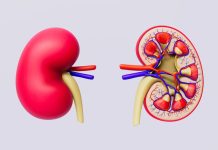
In a new study, researchers used a driving simulator to test patients’ vision before and after cataract surgery.
They found that near misses and crashes decreased by 48% after surgery.
The research was conducted by a team from the University of Western Australia.
Cataracts are a normal consequence of aging. They happen gradually over the years, as the clear lens inside the eye becomes cloudy.
The effects of a developing cataract are sometimes hard to distinguish from other age-related vision changes.
People may become more nearsighted; colors appear duller and glare from lights make it harder to see at night. By age 80, about half of us will have developed cataracts.
The ability of cataract surgery to restore sight is well known. People say they’re stunned by the vibrancy of color after surgery and the improvement in night vision.
Cataract surgery replaces the cloudy lens with an artificial lens. The surgery is low-risk, fast and effective.
But not everyone has surgery right away. The decision is usually based on how much the cataract is interfering with daily life activities.
Ophthalmologists typically operate on one eye at a time, starting with the eye with the denser cataract.
If surgery is successful and vision improves substantially, sometimes surgery in the second eye is forgone or delayed.
However, most people get significant benefits from having surgery on the second eye. Depth perception is improved, vision is crisper, making reading and driving easier.
To better understand the true benefit of cataract surgery to patients’ quality of life, the team tested the driving performance of 44 patients before they had cataract surgery.
The driving simulator assessed a variety of variables: adjusted speed limits, traffic densities, uncontrolled intersections and pedestrian crossings.
Patients were put through the driving simulator again after their first surgery and then again after their second eye surgery.
After the first, near misses and crashes decreased by 35%; after the second surgery, the number fell to 48%.
While visual acuity – how well one sees the eye chart – is an important method to assess a person’s fitness to drive, it’s an incomplete assessment.
Quality of vision is also an important indicator. Improved contrast sensitivity and better night vision improve drivers’ safety on the road.
Scientists suggest some things to consider when considering cataract surgery:
Can you see to safety do your job and to drive?
Do you have problems reading or watching TV?
Is it difficult to cook, shop, climb stairs or take medications?
Do vision problems affect your independence?
Do bright lights make it harder to see?
The lead author of the study is Jonathon Ng, MD.
The study was present at AAO 2019, the 123rd Annual Meeting of the American Academy of Ophthalmology.
Copyright © 2019 Knowridge Science Report. All rights reserved.



